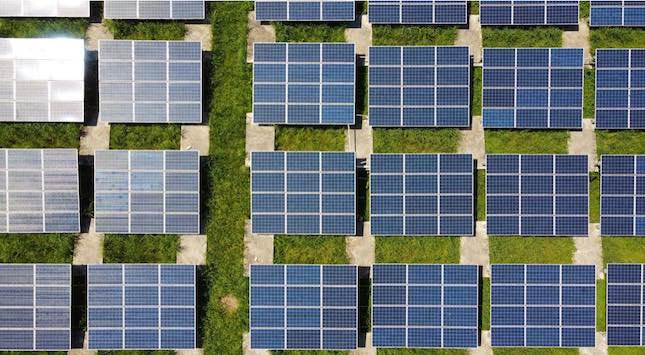Technology is a double-edged sword. It’s made possible the quality of life we enjoy today but it’s also among the primary reasons we are facing a climate crisis.
It’s easy to demonize technology and blame it for everything wrong with the environment and society — but technology is whatever humans make it to be. It’s we who decide whether it will do good or bad.
That being said, technology will play a major role in our fight against climate change. Technological advancements towards sustainable development will bring rise to technology that can replace old and unsustainable ones such as fossil fuels and plastics.
What is Environmental Sustainability?
Environmental sustainability is the responsibility to fulfil our needs today without compromising the ability of future generations to fulfil theirs. To be environmentally sustainable, we need to forge a way of life that doesn’t destroy lands, seas, and the atmosphere; a lifestyle that doesn’t exhaust natural resources.
But if we’ve learned anything from economics, the needs of humans are endless while the resources are not. Building an environmentally sustainable future will undoubtedly be a tough challenge and technology is going to help us a lot.
Increasing Efficiency in Industries
Among the key goals in achieving environmental sustainability is decreasing or eliminating waste. The primary way of reducing waste is through increased efficiency. Better efficiency in every industry — in the manufacturing of goods, generation of energy, consumption of energy, and others — will go a long way in creating a sustainable future.
Below are the ways technology is being used to improve efficiency in industries.
Automation
Through breakthroughs in AI and robotics, plenty of processes can now be automated. Many labour-intensive tasks and precision tasks can now be executed more efficiently using cutting-edge automation systems.
These systems can analyze and detect bottlenecks that decrease efficiency, before streamlining the process and eliminating waste. Automation allows industries to divert much of their workforce on labour that requires the judgment and reasoning of a human being.
Some examples of automation leading to better efficiency are the following:
Automated Vehicles/ Ships
self-driving vehicles are becoming more common on our roads and they’re more sustainable than cars driven by humans. Unlike humans, AIs don’t drive at exceedingly high speeds or use the brake and re-accelerate too frequently. Self-driving cars have the computing ability to drive more efficiently, resulting in less fuel burned or battery power consumed.
Compared to cars, there are fewer automated and electric ships but they are starting to grow in number. Much like land vehicles, these automated ships can sail more efficiently and consume less fuel through various tech tools such as weather routing systems and the use of buoys.
Business Process Automation
It may not be obvious, but corporate workplaces have a relatively large carbon footprint. From paperwork to meetings, corporations can make a sizable contribution to carbon emissions. Through automation, this carbon footprint can be reduced significantly. Automating email marketing, recruitment, customer service, and sales can translate to a large boost in operational efficiency. This decreases the need for more manpower and more hours worked.
Manufacturing Automation
Manufacturing might be the earliest industry to use automation on a large scale. However, advancements in programming have allowed for even better manufacturing efficiency. The manufacturing of product batches can now be governed by a program that can adapt to changes and accommodate different product configurations and sequences. The result is lower operating costs, better workplace safety, and increased efficiency.
Enhanced Communication and Planning
Excellent communication and planning are among the main ingredients of a successful business. Humans are inherently good at communicating and planning, but with technology, they can do even better.
Today, we have no scarcity of collaboration platforms and project management software that helps boost the efficiency of business processes. Coordination between teammates continents apart can be done as easily as face-to-face while big projects can be outlined, simplified, and divided into workers in just a few clicks.
Alone, these optimizations might not amount to much but collectively, they improve efficiency to a degree that matters in a sustainable future.
Improving the Viability of Cleaner Fuel
Another key goal in achieving environmental sustainability is the transition to cleaner fuel. We have made large strides in this theatre as the price of solar and wind energy have dropped significantly in the past decade, but we still have a lot of work to do. The major roadblock we currently face is the viability of cleaner fuel alternatives.
We have a lot of options — from hydrogen fuel cells to sustainably produced compounds such as e-methane — but existing technologies are incapable of making them viable for commercial use.
Given time and funding, these technologies will be further developed and it will be well worth the investment. Hydrogen fuel cells, for instance, produce a lot more energy for the amount of resources they require. They also emit no pollution, unlike fossil fuels.
Capturing Carbon in the Atmosphere
With so much deforestation and carbon already in the atmosphere, experts say we can’t plant enough trees fast enough to make a difference. And so, we turn to carbon capture technologies.
But just like cleaner fuel alternatives, they are yet to be viable. Carbon capture tech has existed for decades now but they are too expensive to justify wide-scale use.
However, further research and development will eventually birth the best pieces of carbon capture technologies, driving its cost down and making it make sense economically. Pairing that with putting a price on carbon emissions, carbon capture can easily take centre stage in environmental sustainability.
Conclusion
Technology is developing at a rapid pace and the ways it can contribute to environmental sustainability will continue to expand. As long as we develop technology with sustainability as a priority, we won’t fall into the same climate crisis we are experiencing today.






